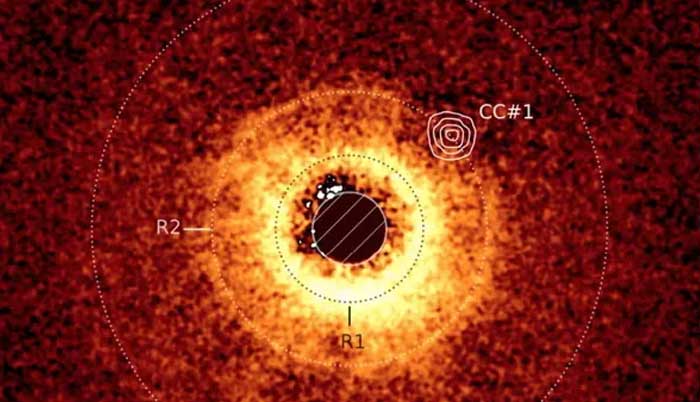![]() Home > Space & Science
Home > Space & Science
NASA’S James Webb Space Telescope Has Captured Its First Direct Image Of An Exoplanet

NASA/JWST
![]() June 26th, 2025 | 10:10 AM |
June 26th, 2025 | 10:10 AM | ![]() 690 views
690 views
SPACE
TWA 7 b is 110 light years from Earth.
NASA’S James Webb Space Telescope has captured direct images of a planet outside of our solar system, which is the first time it has accomplished such a feat. This is a very big deal because exoplanets don't put out much light, so researchers typically discover new planets through indirect methods like keeping track of shadows as they pass across a host star.
Webb, however, didn't have to do all that. It has directly captured images of a planet called TWA 7 b. Scientists believe the planet is around the mass of Saturn and is located 100 light years away from Earth.
The planet is much further away from its star than Earth, so it has a wider orbital period that lasts several hundred years. The planetary system is thought to be around 6 million years old, so we are really getting a snapshot into the early stages of its development. Our sun is considered to be middle-aged and is around 4.6 billion years old.
TWA 7 b is ten times smaller than any previous exoplanet to be directly observed with a telescope, according to The Guardian. Typically, planets of this size can't be seen by telescopes, as the light from the host star masks direct observation.
The research team, led by Dr. Anne-Marie Lagrange, got around this by making a telescopic attachment that mimicked the results of a solar eclipse. This reduced much of the light emanating from the star to make it easier to observe surrounding objects.
The process allowed the team to spot the planet, which appears as a bright source of light with a narrow ring of debris. Lagrange and her team do note that there's still a "very small chance" the images show a background galaxy, but the evidence "strongly points" to the source being a previously undiscovered planet.
The first exoplanet was first discovered in 1992. Since that time, nearly 6,000 more have been spotted. Again, the vast majority of these have not been captured with direct imaging.
This is just the latest stunning discovery by our good friend James Webb. It recently captured a cosmic phenomenon called an "Einstein Ring," which is when light from one galaxy is bent around the mass of another. Last year, the telescope found the most distant galaxy ever observed.
Source:
courtesy of ENGADGET
by Lawrence Bonk
If you have any stories or news that you would like to share with the global online community, please feel free to share it with us by contacting us directly at [email protected]